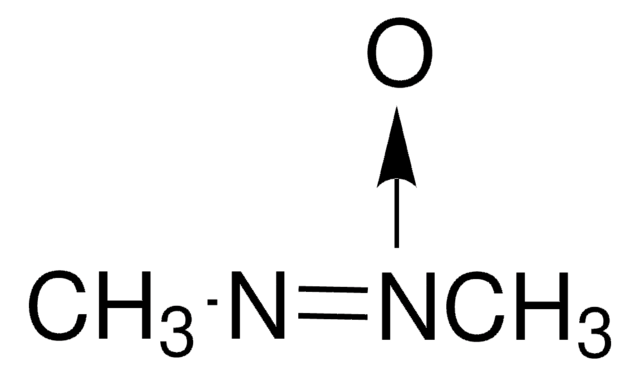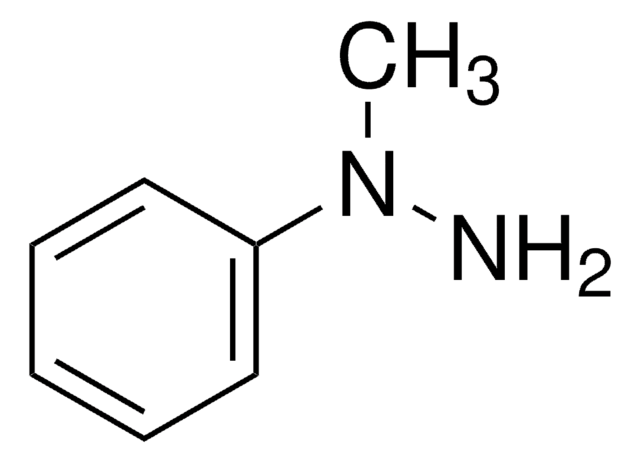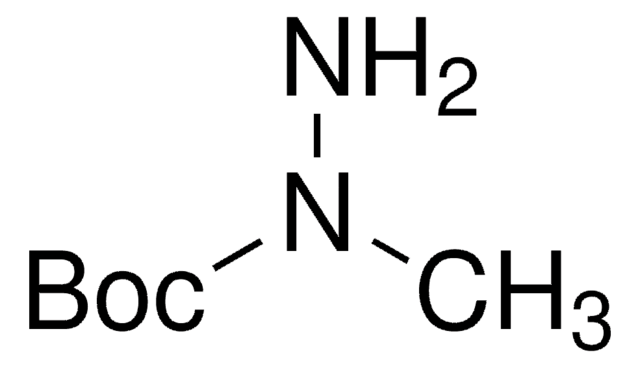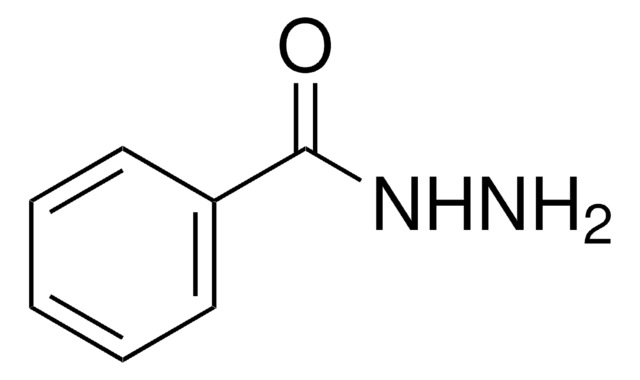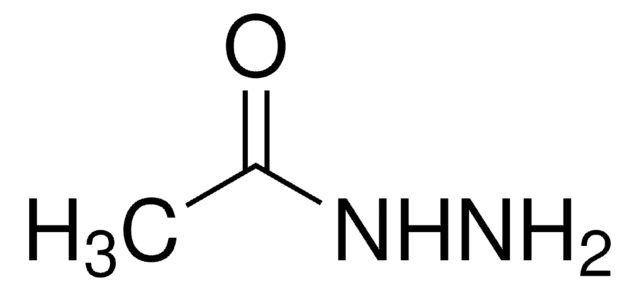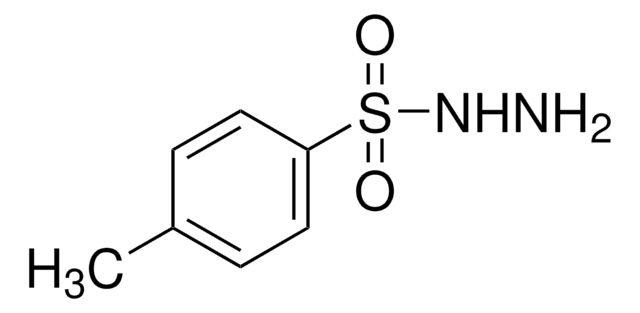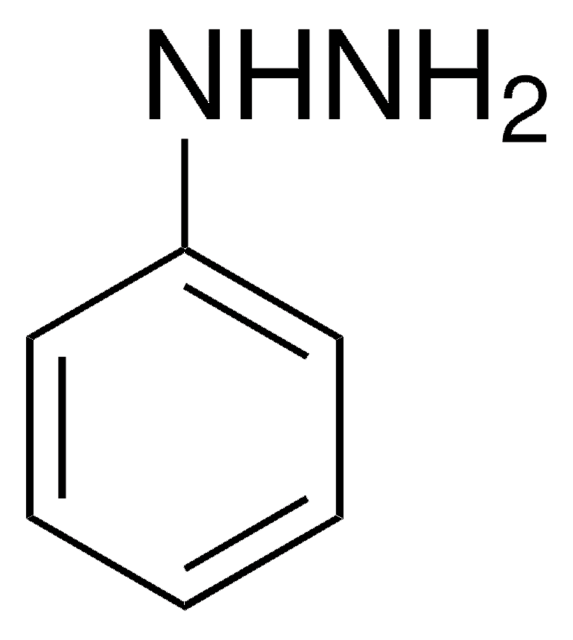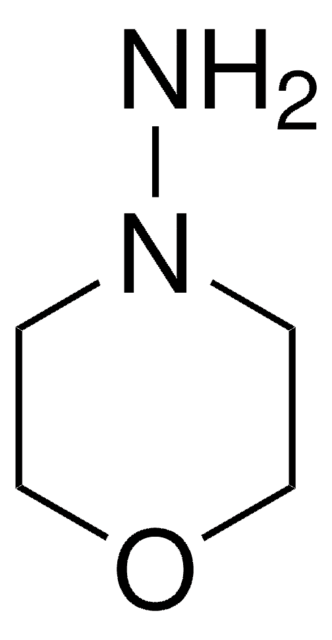D161608
N,N-Dimethylhydrazine
98%
Sinonimo/i:
asym-Dimethylhydrazine
About This Item
Prodotti consigliati
Densità del vapore
1.94 (vs air)
Tensione di vapore
103 mmHg ( 20 °C)
Saggio
98%
Stato
liquid
Temp. autoaccensione
478 °F
Limite di esplosione
95 %
Indice di rifrazione
n20/D 1.4075 (lit.)
P. ebollizione
60-62 °C (lit.)
Densità
0.79 g/mL at 20 °C (lit.)
Temperatura di conservazione
2-8°C
Stringa SMILE
CN(C)N
InChI
1S/C2H8N2/c1-4(2)3/h3H2,1-2H3
RHUYHJGZWVXEHW-UHFFFAOYSA-N
Cerchi prodotti simili? Visita Guida al confronto tra prodotti
Applicazioni
- β-Naphthol via radical amination to form 1-amino-2-naphthol.
- 2-Chloro- and 2,2-dichloro-(bromo)vinyl ketones via regioselective heterocyclization to form 3-substituted 1-methyl(5-halo)pyrazoles.
- Terminal alkynes in the presence of TpRuCl(PPh3)2 (Tp = tris(pyrazolyl)borate) to form nitriles.
N,N-Dimethylhydrazine along with ferric chloride hexahydrate forms an effective reduction system for:
- Synthesizing DNA binding pyrrolo[2,1-c][1,4]benzodiazepine (PBD) imines via reductive cyclization of the corresponding nitro aldehyde.
- Transforming a variety of nitroarenes and azido compounds into the corresponding anilines and amino compounds, respectively.
Azioni biochim/fisiol
Avvertenze
Danger
Indicazioni di pericolo
Classi di pericolo
Acute Tox. 3 Dermal - Acute Tox. 3 Inhalation - Acute Tox. 3 Oral - Aquatic Chronic 2 - Carc. 1B - Eye Dam. 1 - Flam. Liq. 2 - Skin Corr. 1B - STOT SE 3
Organi bersaglio
Respiratory system
Codice della classe di stoccaggio
3 - Flammable liquids
Classe di pericolosità dell'acqua (WGK)
WGK 3
Punto d’infiammabilità (°F)
14.0 °F - closed cup
Punto d’infiammabilità (°C)
-10 °C - closed cup
Dispositivi di protezione individuale
Faceshields, Gloves, Goggles
Scegli una delle versioni più recenti:
Possiedi già questo prodotto?
I documenti relativi ai prodotti acquistati recentemente sono disponibili nell’Archivio dei documenti.
I clienti hanno visto anche
Articoli
Carcinogenesis and Epigenetics
Il team dei nostri ricercatori vanta grande esperienza in tutte le aree della ricerca quali Life Science, scienza dei materiali, sintesi chimica, cromatografia, discipline analitiche, ecc..
Contatta l'Assistenza Tecnica.
